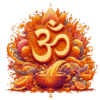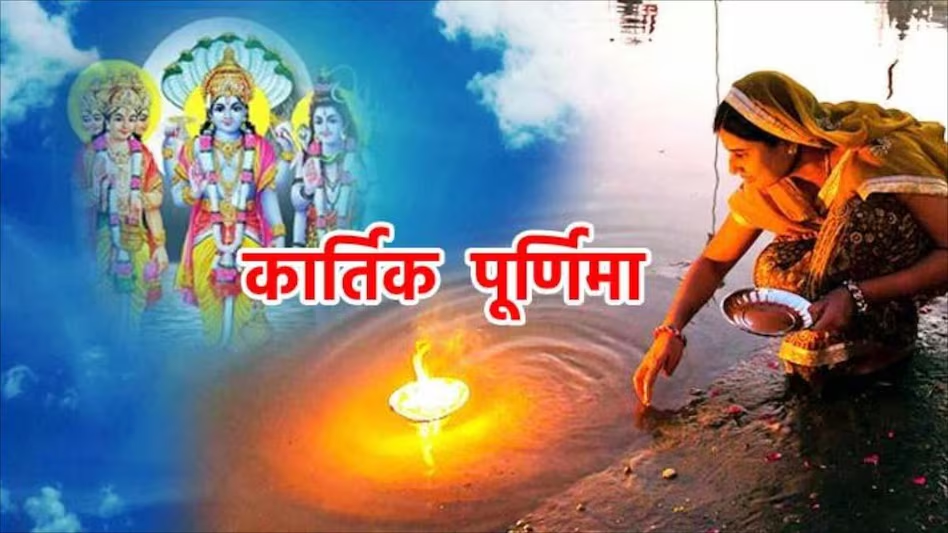Kartika Purnima, observed on the full moon day in the month of Kartik (October–November), is one of Hinduism’s most sacred and evocative festivals, revered across India and by Jains and Sikhs as well. The day exudes a spiritual aura: homes and temples glitter with countless lamps, riversides glow with sacred fires, and the soft fragrance of incense and ghee floats through the air. Kartika Purnima embodies the triumph of divine light over darkness, knowledge over ignorance, and devotion over materialism—values celebrated for centuries in diverse rituals and myths.
Kartika Month in Hinduism, Jainism, and Sikhism
Kartik is the last lunar month in the Hindu calendar and is considered supremely holy for observing fasts, visiting temples, and performing acts of charity. Scriptures declare that all spiritual activities performed in Kartik yield manifold results. Jains honour the month for Lord Mahavira’s nirvana, and Sikhs celebrate it for Guru Nanak’s birth, further amplifying the spirit of inclusiveness and sanctity.
Kartika Purnima 2025 Date and Tithi

Date of Kartika Purnima 2025
Kartika Purnima in 2025 will be celebrated on Wednesday, 5 November. The day is determined by the lunar calendar, falling on the full moon (Purnima) of Kartik Shukla Paksha.
Tithi Timings
The Purnima Tithi begins at 12:42 PM on 4 November 2025 and ends at 2:05 PM on 5 November 2025, though timings may vary locally. The most auspicious period is typically during Pradosh Kaal—twilight on the full moon.
Significance of Kartik Month
The entirety of Kartik is regarded as a ‘month of devotion.’ Fasting during Kartik, offering deepdaan (lamp donations), and bathing in sacred rivers are said to help cleanse all sins, foster spiritual growth, and grant ultimate liberation (moksha).
Mythological Significance of Kartika Purnima
Lord Vishnu’s Matsya Avatar
According to the Puranas, Kartika Purnima commemorates the Matsya Avatar, when Lord Vishnu descended as a divine fish to save the sacred Vedas from a cosmic flood, restoring world order and wisdom. This myth celebrates divine intervention in times of crisis and reinforces the festival’s themes of salvation and protection.
Tripuri Purnima (Lord Shiva’s Victory)
On this same day, Lord Shiva manifested his cosmic power, destroying Tripurasura—the mighty demon who symbolized darkness and ego. This act, known as Tripuri Purnima, signifies the victory of light and virtue over evil and chaos, and is celebrated in Shiva temples with glorious lamp ceremonies and Rudrabhishek (sacred water, milk, and honey offerings to the Shiva Lingam).
Spiritual Meaning
Spiritually, Kartika Purnima stands for purification of karma, the bestowal of divine blessings, and the renewal of faith. It inspires devotees to turn inward, contemplate spiritual truths, and commit to a virtuous path.
Kartika Snan (Holy Bath)
Ritual bathing (snan) at dawn in sacred rivers—Ganga, Yamuna, Godavari, or Pushkar Lake—is the festival’s central act. Even at home, devotees often add Ganga jal to their bathwater. This bath is believed to cleanse past sins and open the heart to divine grace.
Deepdan (Offering of Lamps)
As dusk falls, the spectacular ritual of deepdaan (lamp offering) begins. Small clay lamps filled with ghee or oil, often decorated with flowers, line river ghats, temple floors, and home windowsills, illuminating the world and symbolizing the removal of ignorance.
Fasting and Charity
Many devotees undertake Satyanarayana Vrat—fasting and listening to the Satyanarayana Katha to honour Vishnu. Charity is integral; feeding the poor, donating clothes, and offering lamps are believed to multiply spiritual merit.
Chanting and Prayers
Continuous recitation of the Vishnu Sahasranama, Rudrabhishek in Shiva temples, and singing devotional songs creates an ambience of serenity. Scriptures are read aloud, and devotees engage in meditation and japa (repeated chanting of mantras).
Tulasi Vivaha and Other Rituals
Kartika Purnima is also the final day for Tulasi Vivaha, the ceremonial marriage of Tulsi (Holy Basil) to Lord Vishnu, symbolizing union and harmony. The wedding is performed with rituals echoing traditional Hindu marriage customs.
Dev Deepavali in Varanasi
Festival of the Gods’ Lights
In Varanasi (Kashi), Kartika Purnima transforms into Dev Deepavali, the “Diwali of the Gods.” Mythology holds that on this occasion, all the gods descend to the Ganga to bathe and bless mortals. The city becomes a canvas of spiritual radiance.
Varanasi Ghats Illumination
Over a million diyas illuminate 100-plus ghats along the Ganges, including Dashashwamedh, Assi, and Rajghat. Temples, boats, and even the river itself twinkle with flames, creating a breathtaking spectacle.
Ganga Aarti and Cultural Events
Sunset brings thousands of devotees and tourists to witness the grand Ganga Aarti. Priests chant mantras, move lamps in rhythmic circles, and offer flowers to the Goddess Ganga. The event is accompanied by music, traditional dance, and sometimes fireworks.
Boita Bandana – Maritime Festival of Odisha
Meaning of Boita Bandana
In Odisha, Kartika Purnima is equally renowned as Boita Bandana, honouring the ancient Sadhabas—Odia sea traders who sailed to Southeast Asia for trade. The festival pays tribute to Odisha’s historic maritime enterprise and adventurous spirit.
Rituals of Boita Bandana
At dawn, families gather near rivers and water bodies to float miniature boats (boitas) made of banana peels, paper, or shola, some adorned with tiny lamps and flowers, symbolizing the longing for safe and successful journeys. Chants and traditional songs fill the air.
The celebration follows a month-long Kartik Habisha vrata, where devotees eat only simple vegetarian food once daily as a mark of self-discipline.
Bali Yatra Fair
Boita Bandana ushers in the Bali Yatra, a grand fair in Cuttack, drawing millions. The fair recreates old ports, hosts food and handicrafts stalls, cultural performances, historical exhibitions, and commemorates the maritime legacy. The festival showcases Odia pride in Kalinga’s global connections.
Kartika Deepam in South India
Kartika Purnima is celebrated as Kartika Deepam in Tamil Nadu and Andhra Pradesh, especially in Shiva temples and communities. Temples and homes are decked with deepams; processions carry images of deities; and hymns resound everywhere, invoking Lord Shiva and the mysteries of divine radiance.
Tiruvannamalai Celebration
Nowhere is Kartika Deepam more splendid than in Tiruvannamalai. At sunset, the gigantic Mahadeepam is lit atop Annamalai hill after the temple’s ceremonies. Visible for miles, the beacon represents Shiva’s infinite light and his presence in all creation.
Spiritual Importance of Kartika Purnima
Scriptures promise that acts performed on Kartika Purnima—ritual bathing, deepdaan, charity, meditation, and prayers—purify karma and lead towards moksha (liberation). The festival is thus a time for transformation through devotion and surrender.
Blessings of Lord Vishnu and Shiva
Honouring both Vishnu and Shiva during Kartik is unique: Vishnu’s grace confers peace and prosperity, while Shiva’s grace dissolves fear and obstacles. Observing Kartik vrat (vows) ensures spiritual growth and well-being.
Month of Ultimate Devotion
Kartik’s thirty days are considered the crown of sacred months; devotees abstain from non-vegetarian food, avoid intoxicants, and dedicate time to charity, worship, and reflection each day.
How to Celebrate Kartika Purnima at Home
For those unable to reach pilgrimage sites, Kartika Purnima can be celebrated at home with rituals and quiet devotion:
- Wake before sunrise; perform a holy bath—adding Ganga water if possible.
- Light ghee or oil diyas in your puja room. Offer Tulsi leaves to Lord Vishnu’s idol or image.
- Chant mantras (such as Vishnu Sahasranama or Shiva Stotra); meditate in silence, read scriptures, and reflect on spiritual teachings.
- Prepare simple sattvik food (vegetarian, without onion or garlic) and distribute it to the poor or offer it to guests.
- Support local charities and participate in community prayers and lamp-lighting.
Conclusion
Kartika Purnima is more than a date—it’s a vivid celebration of faith, generosity, and spiritual renewal. The festival’s many forms—river baths at dawn, shimmering lamps on temples and ghats, heartfelt prayers, and joyful fairs—embody the ancient Indian message: light always prevails over darkness, and knowledge dispels ignorance.
People of all ages, backgrounds, and traditions unite during Kartika Purnima, whether at Varanasi’s luminous Dev Deepavali, along Odisha’s rivers for Boita Bandana, in the sacred precincts of southern Shiva temples, or within the quiet walls of their homes. By practicing humility, charity, and devotion, everyone can invoke divine grace and share in the timeless blessings of Kartika.
Frequently Asked Questions (FAQ)
What is the deeper significance of Kartika Purnima?
Kartika Purnima marks the triumph of light and wisdom, recalling the divine acts of Vishnu and Shiva and inspiring spiritual practices that encourage self-purification and the pursuit of knowledge.
Why is Kartika Purnima sacred for Vishnu and Shiva worshippers?
Both Lord Vishnu’s Matsya avatar (rescue of the Vedas) and Lord Shiva’s victory over Tripurasura are celebrated, making the day sacred for followers of both deities and a time when both blessings are sought.
What makes Kartika Purnima unique compared to other festivals?
Kartika Purnima is pan-Indian, honored with river baths, lights, music, and fairs, with regional events like Dev Deepavali and Boita Bandana celebrating local history while connecting to national myths and spiritual values.
How does Dev Deepavali differ from regular Diwali?
Dev Deepavali, celebrated in Varanasi, is believed to be the time when deities descend to bless mortals, with more than a million diyas illuminating ghats and boats, grand Ganga Aarti, and cultural spectacles on the riverbanks, 15 days after Diwali.
What is the story behind Boita Bandana in Odisha?
Boita Bandana honors the Sadhabas—ancient Odia traders who sailed to southeast Asia millennia ago. Floating miniature boats recalls their maritime journeys, celebrates Odisha’s historic global connections, and inspires pride in heritage.
Can Kartika Purnima be celebrated at home, and how?
Yes—individuals can perform ritual bathing, light diyas, chant mantras, read holy texts, prepare sattvik food, give charity, and join community lamp-lighting and prayers, all while focusing on spiritual self-improvement.
What are the benefits of Kartika Snan and Deepdaan?
Both acts are believed to bestow spiritual merit, cleanse karma, and purify body and mind, helping devotees progress towards peace, prosperity, and spiritual liberation.
This complete guide offers historic context, spiritual depth, regional highlights, stepwise rituals, and clear answers to all major questions, providing a thorough understanding of Kartika Purnima and its luminous role in Indian culture.
Krishna Mishra writes for Insights of Hinduism, where he shares heartfelt thoughts on festivals, traditions, and the timeless wisdom of Sanatan Dharma. His aim is to keep the essence of Hindu culture alive in a way that feels simple, authentic, and relatable to everyone.


